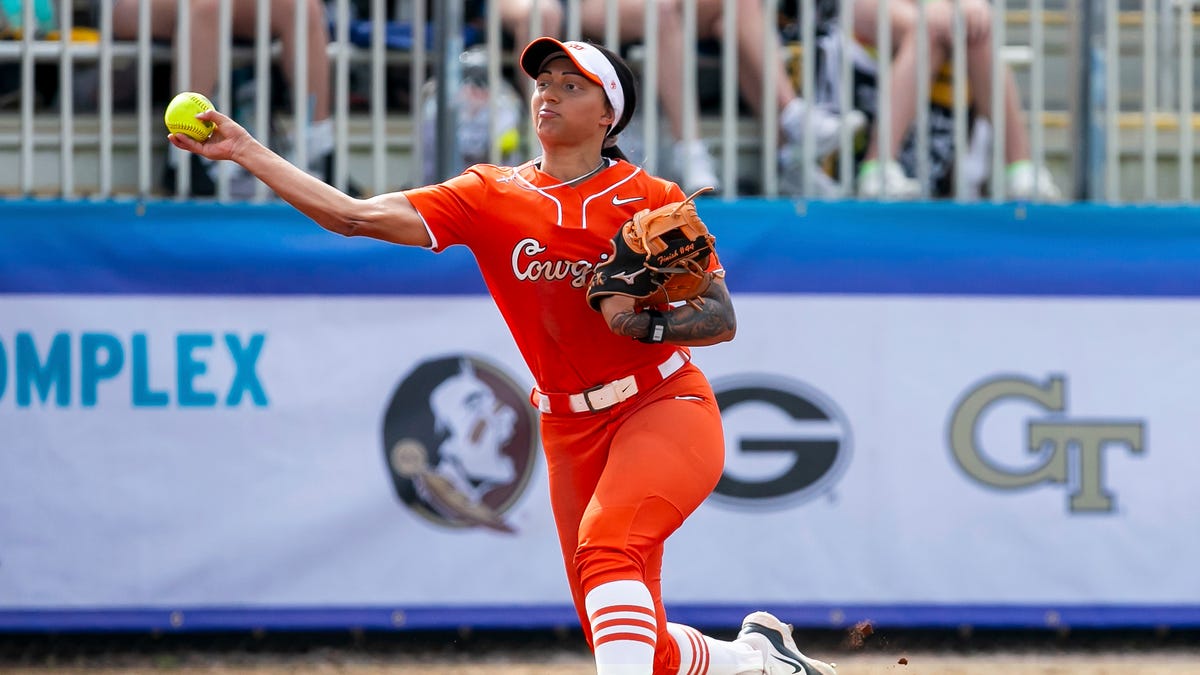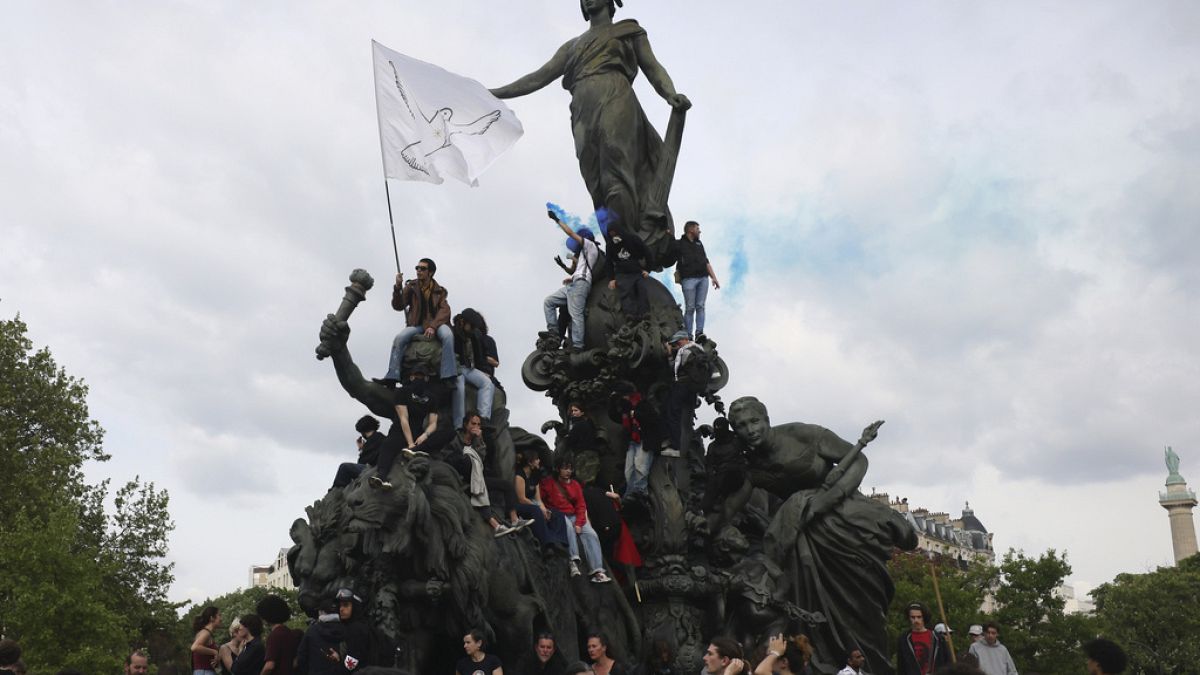Washington
Pac-12 finances: Washington attempts to restructure stadium debt as Big Ten move looms

Washington’s athletic department broke the $150 million mark in revenue last year for the first time in school history and reported an operating surplus, according to financial documents reviewed by the Hotline.
But the most significant money matter on Montlake wasn’t included in an 81-page report to the NCAA and is months away from unfolding … if it materializes at all.
The school is “evaluating options” for refinancing the debt on the Husky Stadium renovation, a move that potentially could free up valuable cash for operations as the Huskies transition into the Big Ten.
Washington’s $280 million renovation of Husky Stadium in the early 2010s relied heavily on debt provided by the university’s internal lending program (ILP) over a 30-year period.
The athletic department paid $12.3 million in debt service in the 2022 fiscal year, per the financial report submitted to the NCAA.
But that figure dropped by approximately $3 million in 2023 after Washington’s board of regents approved a temporary restructuring plan.
The new approach allows the Huskies to make interest-only payments through the 2025 fiscal year, according to the regents:
“Restructure ILP debt service so that fiscal years 2023 – 2025 are $3.1 million lower per year, leaving (athletics) to pay interest only during these years. The principal amounts will be amortized over the life of the loans.”
The interest-only window ends in the summer of 2025, but the pressure on Washington’s budget will not.
The Huskies begin play in the Big Ten later this year after agreeing to enter the conference, along with Oregon, at a steep discount.
The schools will receive half-shares of the Big Ten’s annual media rights deal with Fox, CBS and NBC.
Over the course of the six-year contract term, that discount will result in the Pacific Northwest powers receiving about $180 million less than their peers in the Big Ten, including USC and UCLA, which were granted full shares when they agreed to join the conference in 2022.
Every dollar UW saves on debt service could help offset the revenue disparity.
As a result, president Ana Mari Cauce’s office and the athletic department have been “evaluating options for debt service in both the near and long term as a part of (the) annual budget development,” per a statement issued to the Hotline by Cauce’s office.
Any restructuring of the debt beyond 2025, when the interest-free window expires, must be approved by the regents. UW plans to make its case at the June meeting “in conjunction with board budget approvals.”
The savings from a restructured payment plan are not publicly known. But if, for example, the new rate lowered UW’s annual debt service by the same amount as the temporary shift to interest-only payments ($3.1 million annually) — and if that process played out for the entirety of the Big Ten’s media rights deal — the Huskies would save about $19 million.
If funneled to operations, that would cover the salary for a top-tier offensive or defensive coordinator over the entire timeframe.
Other news and notes from UW’s financial report to the NCAA, which was submitted earlier this year:
— The Huskies were one of five schools in the Pac-12 that reported an operating surplus in the 2023 fiscal year, along with Oregon, Cal, Arizona and Utah.
UW booked $151.6 million in revenue against $150 million in expenses.
— However, the schools include financial support from campus as revenue, in accordance with NCAA reporting regulations.
Washington’s campus support, which took the form of student fees allocated to athletics and direct transfers from the university, totaled $10.3 million last year — the fourth-lowest amount in the conference.
Oregon received no direct help from campus while UCLA received $2.1 million in support and Washington State received $6.8 million.
The total amount of campus support for the 11 schools was $150.5 million, according to an analysis by the Hotline. (USC’s budget was not available.)
— When campus support was removed from their revenue total, the Huskies showed an $8.7 million operating loss.
Only Oregon, which generated a $3.8 million surplus, fared better.
Arizona State, Cal, Colorado, Stanford and UCLA all produced shortfalls in excess of $30 million when campus support was removed from the revenue total.
— The Huskies declined to provide budget projections for the 2024 fiscal year, citing the changes in athletic directors and head coaches, the Pac-12’s negotiated settlement with the outgoing schools and the university’s new financial accounting system.
The combination has “created uncertainty in FY24 revenue/expenses that we are still actively reconciling.”
*** Send suggestions, comments and tips (confidentiality guaranteed) to pac12hotline@bayareanewsgroup.com or call 408-920-5716
*** Follow me on Twitter/X: @WilnerHotline
*** Pac-12 Hotline is not endorsed or sponsored by the Pac-12 Conference, and the views expressed herein do not necessarily reflect the views of the Conference.

Washington
Over decade of Washington, D.C., protests, police scanned social media for 'disrupters' | StateScoop

Over the last ten years, the Metropolitan Police Department in Washington, D.C., has used automated, online surveillance tools to monitor individuals’ social media activity during protected activities, such as protests, and even employed fake social media accounts, according to a report released Tuesday.
The report, which was a collaboration between the Brennan Center for Justice at NYU Law and the Data for Black Lives collective, shared the results of a 2020 Freedom of Information Act request that yielded more than 700,000 pages of internal documents from the Washington police department. The documents showed how MPD police used the online surveillance tools between 2014 and 2021, monitored social media activity, amassed user data and surveilled protest activity though online posts.
City documents acquired through the records request revealed that MPD employed a company called Dataminr, which is an official partner of the social media website X. Dataminr claims to use artificial intelligence to provide its clients real-time alerts about “high-impact events” by monitoring social media posts. According to the Brennan Center report, Dataminr provided MPD with 40 user licenses through a no-cost pilot project in January and February 2017. During that time, the documents showed, MPD used Dataminr software to search for terms such as “riots” and collected social media data surrounding events including Donald Trump’s presidential inauguration and the Women’s March.
Following the pilot, the documents show, MPD purchased seven annual Dataminr licenses at a cost of almost $48,000 using Homeland Security Grant Program funding. And in 2020, the police department renewed its partnership with Dataminr, this time purchasing 50 licenses. The District’s Office of the Chief Technology Officer, which handled procurement of the licenses, paid about $200,000 for the 50 licenses and provided 45 of them to the District’s Homeland Security and Emergency Management Agency.
In an email dated May 29, 2020, OCTO’s then-chief data officer, Barney Krucoff, wrote that access to Dataminr “would be very handy” in the event that large-scale protests — like those in Minneapolis after George Floyd’s murder — were to occur in Washington, D.C.
Another vendor used by District police, called Voyager, claims it can run keyword searches on social media platforms and identify activists or “disrupters,” and then tap into their networks to glean information about their personal relationships and interests. The tool uses fake accounts to gain access to information that it uses to construct reports of users’ social media activity. That activity includes information about user posts and locations.
Ivey Dyson, counsel with the Brennan Center’s Liberty and National Security Program, told StateScoop that the project was inspired by work from the American Civil Liberties Union of Northern California, which in 2016 discovered through FOIA requests that state law enforcement agencies were monitoring social media activity. Dyson said the Brennan Center and Data for Black Lives submitted their own FOIA requests to several police departments for similar information, including in Baltimore, Boston, Los Angeles and New York City.
“Something that’s concerning about that is the fact that online relationships might not translate to in person relationships,” Dyson told StateScoop about Voyager’s technology. “And so while these might be accurate about online activity, it’s not really — if Voyager can do what it says it can do — online activity does not necessarily reflect real-life relationships. And so how useful that information is to law enforcement is questionable.”
Initially, MPD produced only a handful of documents, and in response, the Brennan Center and Data for Black Lives, represented pro bono by Ballard Spahr LLP, in March 2022 sued the city for the remainder of the documents, which included procurement records and emails exchanged among the department, the city’s Office of the Chief Technology Officer and several private software vendors that collect and analyze social media activity.
Dyson said the social media vendors used by the District police department, which purport to collect massive amounts of data, often do so against the social media platforms’ terms and conditions agreements. Last year, Meta — the parent company of Facebook and Instagram — sued Voyager for scraping user data with dummy accounts.
“These tools specifically are unable to understand context, and so what might be an innocent post could then get taken by law enforcement and interpreted into something that is seen as threatening. And this can result in real-life, human-police interactions,” Dyson said. “As we know, those interactions — specifically for communities of color — can be quite harmful, even deadly.”
Dyson said that to avoid chilling free speech and First Amendment-protected activities such as protesting, it’s important for law enforcement agencies to be transparent about their technology policies. That advisement is a key part of the Brennan Center’s social media use policies for law enforcement, a rubric of best practices that also takes into account the risks of automated social media monitoring software.
“I think what’s unique about Washington, D.C., is that it’s a place that hosts hundreds of protests every year,” Dyson said. “It’s a place where important decisions are being made that affect people nationwide. And so there should be strong protections in Washington, D.C., to prevent unwanted scrutiny of protected speech online.”
Neither the Metropolitan Police Department nor the Office of the Chief Technology Officer responded to requests for comment.
Editor’s note: Scoop News Group has previously consulted with Ballard Spahr’s Media and Entertainment Law practice.
Washington
Washington Nationals news & notes: Nats drop opener with Rangers, 7-1; 4-game win streak snapped…

CJ ABRAMS’ WORLD:
Going into last night’s series opener in Arlington, TX, CJ Abrams had reached base safely in 15 straight games, with a .317/.414/.700 line, five doubles, three triples, four home runs, and eight walks in 70 plate appearances over course of the on-base streak, and hits in 14 of the 15 (reaching via HBP on an 0 for 3 night in his only hitless game in that stretch).
Abrams homered (7) and walked twice in the series finale in Miami on Monday night, and his manager, Davey Martinez, talked about how important those walks were to the shortstop for his continued development.
“We talk all the time about him walking, and I said, ‘You’re going to have to do that. Get on for the next guy.’ When you walk, it’s a double, a triple,’” Martinez told the Nats’ 23-year-old infielder, repeating his persistent message for Abrams.
“He’s doing outstanding, he really is. And I’ve said this before, he’s matured so much just in his overall game.”
It’s not just his skipper and Nationals fans who’ve noticed Abrams taking things to another level this season…
CJ Abrams is way too good to have been acquired in a trade with MacKenzie Gore and James Wood and Robert Hassell and Jarlin Susana. pic.twitter.com/ogHDoL1xww
— Grant Paulsen (@granthpaulsen) April 29, 2024
Abrams did swipe a bag in the finale with the Marlins too, his 6th in 8 attempts this season.
Last night in Texas, Abrams reached base via infield single in his first at-bat, extending that on-base streak to 16-straight games, stole his 7th base, and scored when Luis García, Jr. hit a two-out single to left to drive in the first run of the game, 1-0.
Talking Abrams with Audacy’s The Sports Junkies on 106.7 the FAN in D.C. last Wednesday, GM and President of Baseball ops Mike Rizzo pinpointed last June as the turning point for Abrams, the 2019 1st Round pick by the Padres acquired in the deal which sent Juan Soto and Josh Bell to San Diego in 2022.
“I remember we sat down with CJ,” Rizzo recalled, “… and had a nice meeting with him and said, ‘Hey this is what is expected of you and this is how you need to conduct yourself’ and several players took him under [their] wing and showed him how to prepare, get a routine as a major league player.”
“And I know [Third Base and Infield coach] Ricky Gutierrez has been very instrumental in his defensive work,” the GM added, “and [Hitting Coach] Darnell [Coles] has worked with him in a lot in the batting cages.”
“His chase rate is down … the pitches he’s swinging at are better pitches, he knows what he can handle,” Rizzo explained. “And the pitches that he had trouble with when he first came up to the big leagues, and when he played in San Diego, he’s worked really, really hard to compensate for that and to overcome that.
“You start with a really talented you player, you get a work ethic that is extremely good, you got an attitude of a kid that’s got some swagger to him, that wants to be great, doesn’t want to settle to be good, and I think you’re kind of seeing this guy scratch the surface of what he can possibly be as a player.”
GORE IN TEXAS:
Evan Grant, who’s covered the Rangers for the Dallas Morning News since 1997, previewed last night’s game with an ominous tweet for the home team in Globe Life Field:
To keep in mind tonight: Washington LHP MacKenzie Gore throws a 97 mph fastball and throws it 55% of time.
Rangers are hitting .181 vs. fastballs from LHPs this year, 28th in majors. Their xwOBA of .274 ranks 30th.
— Evan Grant (@Evan_P_Grant) April 30, 2024
While the Rangers haven’t hit left-hander’s fastballs well, Gore started the series with a .278 BAA on his fastball overall this season, after opposing hitters hit .279 on the pitch in 2023.
Gore held Rangers off the board through three, but gave up three straight hits in the fourth, with Nathaniel Lowe, Adolis García, and Jonah Helm connecting for their second, third, and fourth hits off the southpaw as a team and tying things up at 1-1.
The Nationals’ starter was up to 74 pitches overall after he struck out two and fielded a weak grounder for three straight outs after the hits, having thrown 31 pitches in the fourth, with 17 swinging (five on his heater, six on his curve, five on his change, and one on his slider), and a total of six called strikes on the night.
Marcus Semien tripled on a 1-0 fastball from Gore with one out in the fifth, and he scored to put the Rangers ahead on a dribbler in front of the plate off of Corey Seager’s bat which the Nats’ starter fielded and angrily threw to first as the go-ahead run scored, 2-1.
Gore issued his first walk of the game with two out, on his 88th pitch, and hit the next batter on pitch No. 89, but got out No. 3 and stranded both baserunners with his 91st pitch.
MacKenzie Gore’s Line: 5.0 IP, 5 H, 2 R, 2 ER, 1 BB, 7 Ks, 91 P, 59 S, 5/3 GO/FO.
Gore finished the night with 18 swinging strikes, adding one on his curve in the fifth, and he leaned on his curveball overall, throwing it 25% of the time (up from a season average 18%), with 45% fastballs, 15% changeups, and %15 sliders. [ed. note – “Checks math, twice.”]
Jordan Weems and Jacob Barnes gave up a run each in the sixth and seventh, respectively, as the Rangers added to their lead with three off of Tanner Rainey in the eighth, and took the opening game of the three-game series, 7-1, snapping the Nationals’ four-game winning streak.
Outside of Abrams’ early run, the Nationals didn’t do much against Jon Gray (1 ER on 3 H in 8.0 IP), and they dropped the first of three in Texas.
“We’ve been playing well,” Martinez said after the loss. “We hit the ball really well before we came in here, so let’s come back tomorrow and try to go 1-0 tomorrow.
“The bats weren’t good today, but I’m not going to lose sleep over it, it’s one game.”
In assessing Gore’s outing, the manager said his starter put together a solid turn in the rotation.
“Look, he gave up two runs, right? He threw the ball really well. His pitch count was up. We knew coming into today that we were going to keep him around 90 pitches. Last outing he had 102, but I thought he threw the ball really well.”
BONUS QUOTE:
With the loss, the Nationals wrapped up the first month-plus of the 2024 campaign at 14-15, in 4th place in the NL East as of the end of the game last night.
Davey Martinez offered his take on the first month of the season when he spoke to reporters in Arlington:
“You look back and there’s some games we could have won, we could have been above .500, right? But overall, we’re playing good baseball, we’re playing hard, our pitchers have done well, other than today our bullpen has been pretty good, so we got to keep going. It’s April, it’s nice to win games in April. Now we’re going into May. I break the season down and I always tell myself, ‘We can win 15 games a month, that’s pretty good.’ So let’s win 16 next month.”
Washington
Advice | Miss Manners: How to decline donation requests at checkout

Dear Miss Manners: There are so many requests to give donations at the checkout line these days — sometimes multiple times in a day! I do give to worthy causes, but I have been asked at every visit to a particular grocery store, where I shop almost daily, for a contribution.
-

 Education1 week ago
Education1 week agoVideo: Dozens of Yale Students Arrested as Campus Protests Spread
-

 World6 days ago
World6 days agoHaiti Prime Minister Ariel Henry resigns, transitional council takes power
-

 News7 days ago
News7 days agoLarry Webb’s deathbed confession solves 2000 cold case murder of Susan and Natasha Carter, 10, whose remains were found hours after he died
-

 Politics1 week ago
Politics1 week agoFetterman hammers 'a–hole' anti-Israel protesters, slams own party for response to Iranian attack: 'Crazy'
-

 World1 week ago
World1 week agoPeriod poverty still a problem within the EU despite tax breaks
-

 World7 days ago
World7 days agoUS secretly sent long-range ATACMS weapons to Ukraine
-

 News6 days ago
News6 days agoFirst cargo ship passes through new channel since Baltimore bridge collapse
-

 World1 week ago
World1 week agoTurkey’s Erdogan meets Iraq PM for talks on water, security and trade






/cdn.vox-cdn.com/uploads/chorus_asset/file/24648944/asus_rog_ally_vjeran_pavic_the_verge_003.jpg)












